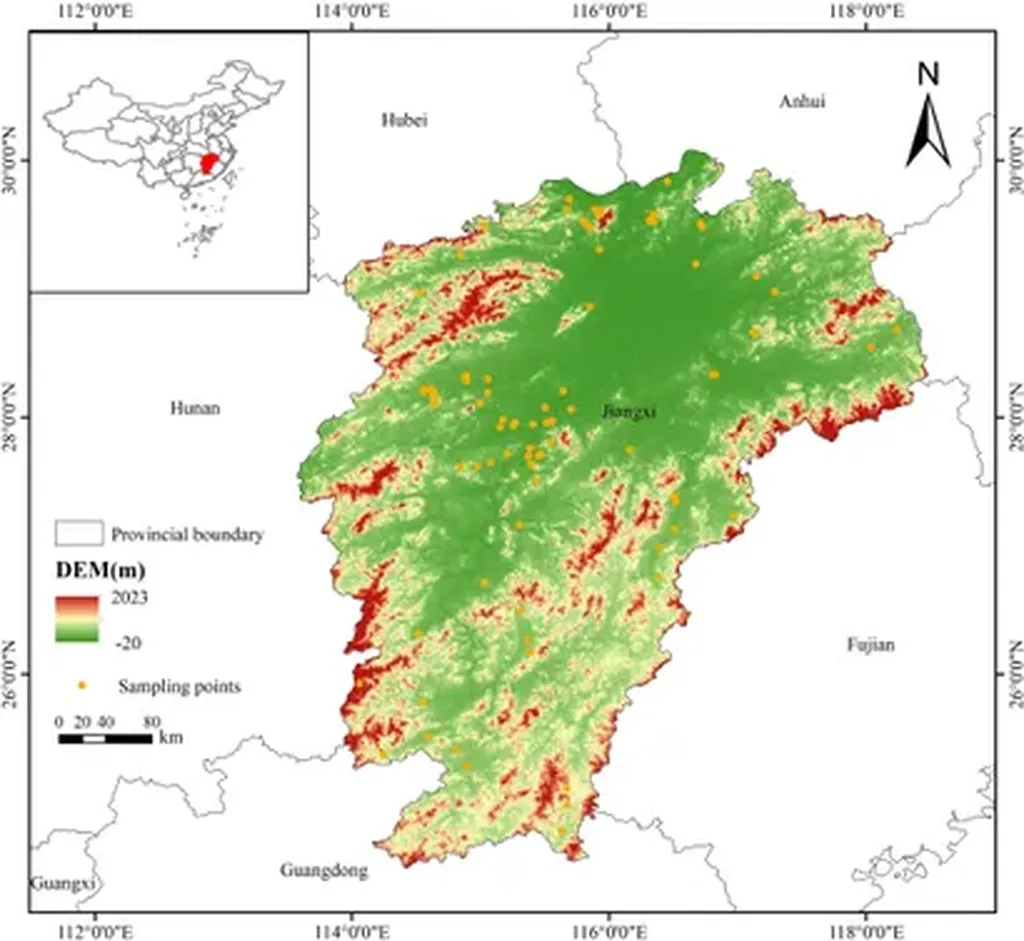In the face of global climate change, the agricultural sector is grappling with significant challenges, particularly in understanding how valuable crops will adapt to shifting environmental conditions. A recent study published in *Frontiers in Plant Science* (translated as “植物科学前沿”) offers a compelling look into the future of macadamia cultivation, a crop with substantial economic value. Led by Yifan Li from the Yunnan Institute of Tropical Crops in Xishuangbanna, China, the research employs advanced modeling techniques to predict habitat suitability for macadamia trees under various climate scenarios.
Macadamia, a genus of economically significant trees, is cultivated across multiple countries, including Australia, China, South Africa, Brazil, and the United States. However, until now, few studies have focused on its adaptive distribution and spatiotemporal dynamics under projected global warming scenarios. Li and his team collected global occurrence records of two commercial Macadamia species—*Macadamia integrifolia* and *Macadamia tetraphylla*—and utilized a parameter-optimized Maximum Entropy (MaxEnt) model to project their suitable habitats under current and future climate scenarios.
The model demonstrated excellent predictive performance, with an area under the curve (AUC) of 0.979. Key bioclimatic variables identified in the study include annual mean temperature, isothermality, minimum temperature of the coldest month, annual precipitation, and precipitation of the driest month. These variables collectively comprise 88.2% of the model’s explanatory power, highlighting the critical environmental factors influencing macadamia cultivation.
Under the current climate scenario, the most suitable cultivation areas for macadamia trees are located in Australia, China, South Africa, Brazil, Madagascar, Argentina, and the United States. However, the study projects significant changes in habitat suitability under future climate scenarios. Specifically, total habitat areas are expected to increase by 1.13–7.51% under scenarios SSP126/585 in the 2030s and 2050s, and SSP126/245/370 in the 2070s. Conversely, reductions of 0.03–2.98% are projected under scenarios SSP245/370 in the 2030s and 2050s, and SSP585 in the 2070s.
Notably, Brazil is projected to experience habitat reductions of 2.59–20.06% across all scenarios, while China shows increases of 0.70–45.11%. “These findings underscore the need for region-specific strategies to adapt to climate change,” said Li. “Understanding the environmental drivers and future habitat suitability is crucial for sustainable macadamia cultivation.”
The study also revealed that *M. integrifolia* exhibits greater cultivation potential and global expansion feasibility compared to *M. tetraphylla*. This insight could guide future breeding and cultivation practices, ensuring the resilience of macadamia crops in the face of climate variability.
The implications of this research extend beyond academia, offering valuable insights for the agricultural and energy sectors. As climate change continues to reshape global ecosystems, understanding the adaptive potential of economically important crops like macadamia is essential for ensuring food security and economic stability. “This study provides an empirical basis for sustainable cultivation under climate change,” Li emphasized. “It highlights the importance of proactive planning and adaptation strategies to mitigate the impacts of global warming on agriculture.”
By elucidating the dominant environmental drivers and projecting future habitat suitability, this research paves the way for more informed decision-making in the agricultural sector. As the world grapples with the challenges of climate change, studies like this one are instrumental in shaping the future of sustainable agriculture and ensuring the resilience of valuable crops.

